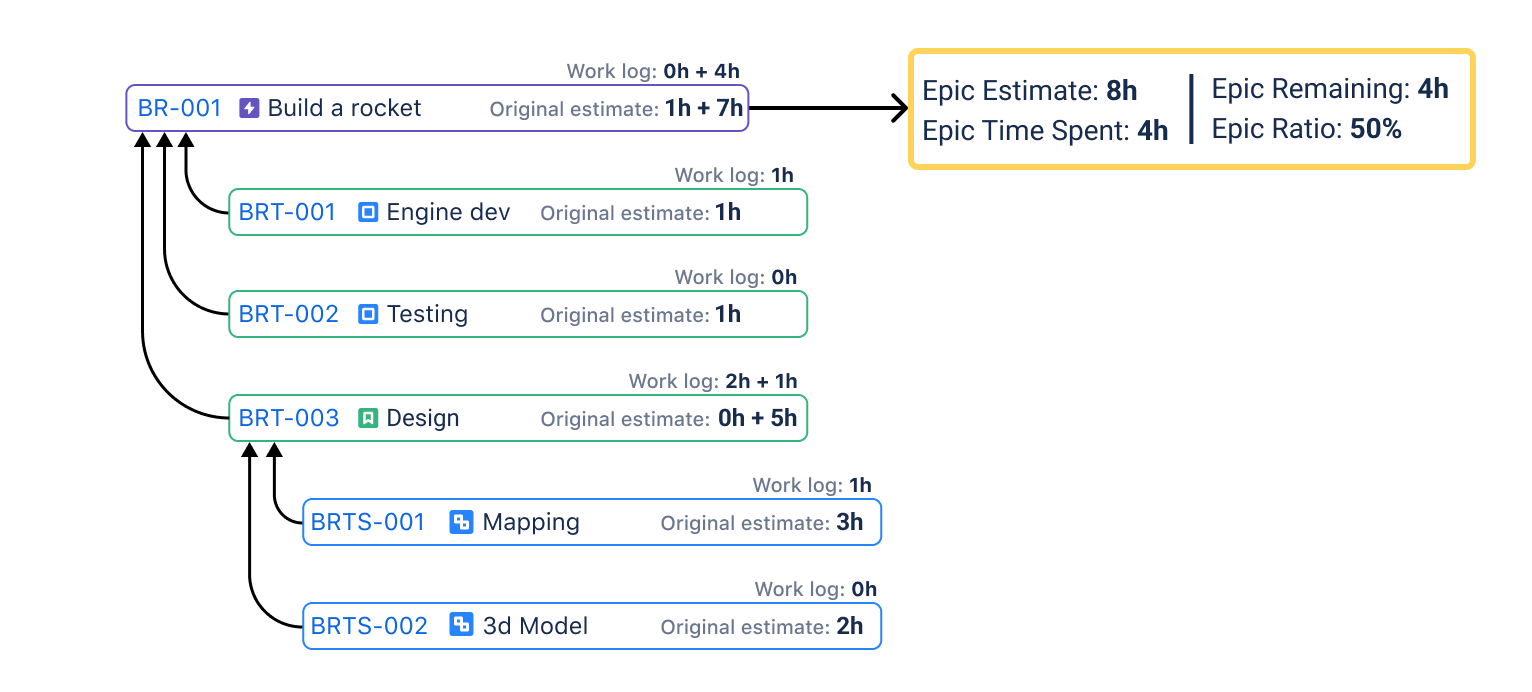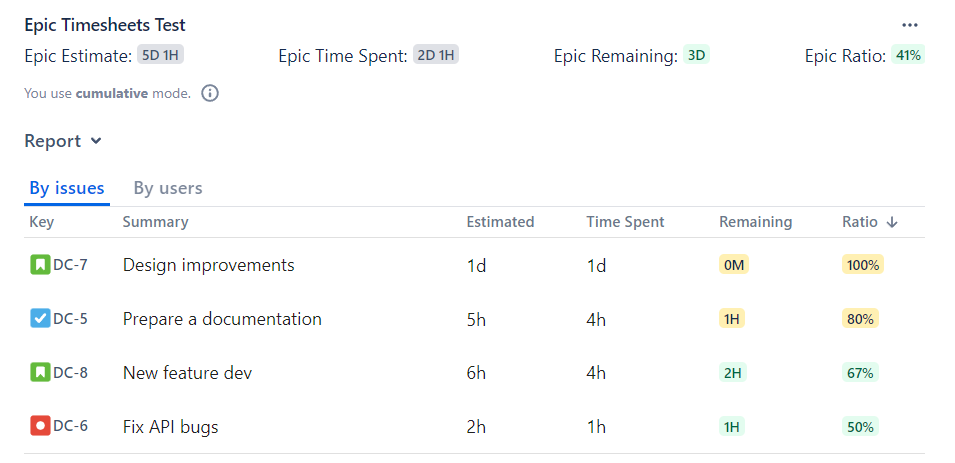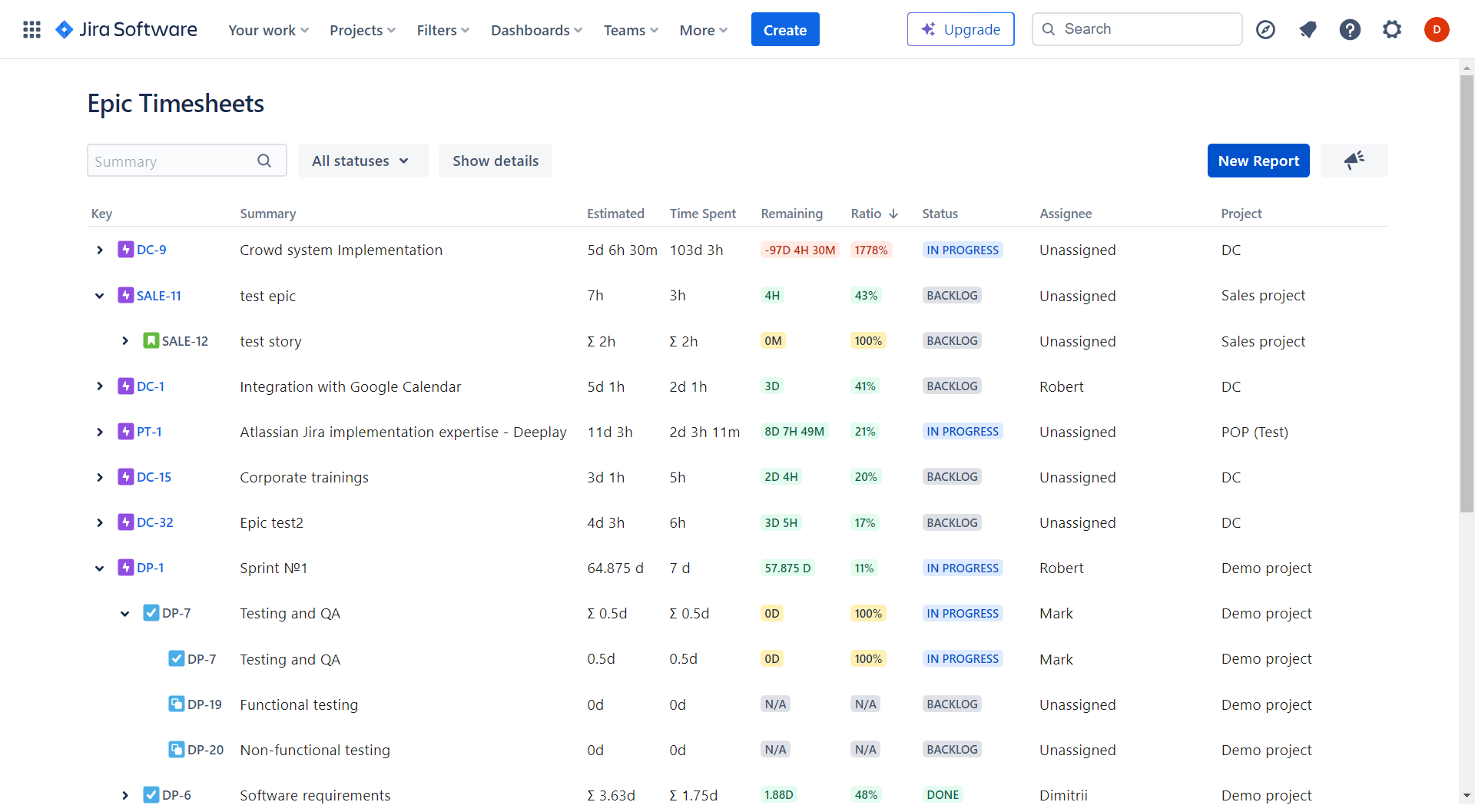Epic Timesheets for Jira Cloud
When working on a project, it's important to stay within the planned budget and not to exceed the allocated amount of time for the project.
Epic Timesheets can help you with that!
There are two options of usage which can be selected per project:
When there is a static amount of time you can spend, but you don't have specific tasks yet, or an estimate of their complexity and time cost (distributive mode);
When we don't know how long the project will take (cumulative mode).
Cumulative mode
This mode summarizes estimates and worklogs of all child issues of an Epic and the Epic itself. Cumulative mode is most useful when tasks are added or changed in scope as the project progresses.
Case: software development team.
In software development it is necessary to take a lot of things into consideration: teammates' opinions, stakeholders' vision, customer feedback, which often leads to a change in the Epic structure. To manage this kind of projects, you need to see the sum of the time estimates of all the tasks included in the Epic.
For example, you got 4 tasks of 7 hours each in an Epic, the total Epic estimate in this case would be 28 hours. But the amount of work can change easily in agile workflow. What if you have suddenly realized that the original implementation does not fully meet the users' request and the estimated time for one of the tasks increases from 7 to 13 hours? The total estimate in this case will be recalculated automatically, you will see a new Epic estimate of 34 hours. Cool, huh?

Cumulative mode
Distributive mode
This mode allows you to specify the number of hours at the Epic level without considering child issues. It is ideal when working on a preset budget and/or number of hours.
Case: consulting team.
Say, you work at a consulting agency and a client bought 50 hours of support from you.
You do know the total amount but you don't know yet which tasks the client will have for you, let alone the timeframe for each of them.
Set Original Estimate field to 50h, and Epic Estimate field will pull that value. Now each time you add a child issue to this Epic, you will log the time actually spent on the task via the worklog of Jira, and time logged will be automatically subtracted from the total number of hours, and the remaining time will be displayed for you.
At any time, you can see how many hours has already been used up.

Distributive mode
Control accurately your time limits
Get the amount of time spent on the epic: Epic Timesheets will aggregate the logged work time from the Epic's child issues and display the sum for you.
If you are required to spend no more than 5 working days for the epic and you are not sure about one extra task to be included in the scope – check the epic remaining time. You can be sure: not a tiniest sub-task logged time passed uncounted.
Just include the relevant issues in the Epic and get their logged work time aggregated to the Epic Time Spent field. The Epic Remaining field will automatically show how much time left for the Epic.
Should you hurry up or you have enough time for your task? See how much time the epic allows you to spend (there are no restrictions, it's just nice to know). Each work log entry will update this information for all your coworkers making time control much easier.
Ensure that your issue has a parent Epic issue and get the Epic Estimate and other Epic Timesheets fields information auto-populated.

Create detailed reports
Sometimes you need to display information from several Epics at once: we have considered this and added the ability to create reports.
Choose Projects and Epics you want to track and see all the details on a single page!
Find Epics with estimated time overrun: sort the issues by the Ratio or the Remaining column.

To be added in next versions:
breakdown by User: ability to see each user's estimations and logs in one place.
More Details
Epic Timesheets for Jira Cloud provides a user the web-section with the following information:
Epic Estimate – estimated Epic time – cumulative or distributive (according to the project settings); for your convenience, this standard parameter is displayed not only within Epic entry but also in all child issues;
Epic Time Spent – logged time of the Epic, summing up the work logs of the Epic itself and the work logs of the Epic's child issues;
Epic Remaining – remaining (or overrun) time of the Epic;
Epic Ratio – the percentage of spent time to the Epic estimated time.
Report – detailed information about Epic including child issues (the content of the table can be sorted).
First four fields are created as custom fields and available via Dashboards and Issue Navigator of Jira.
.png)
